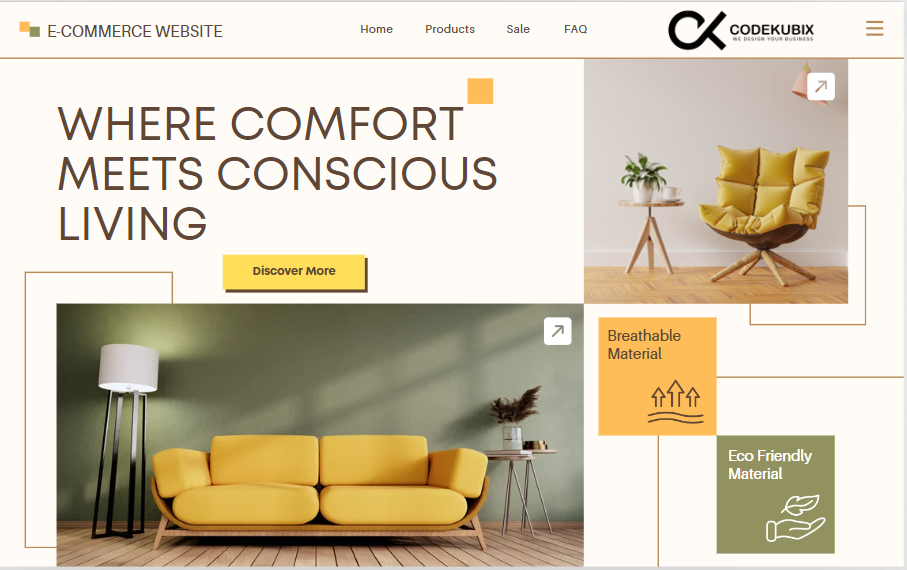
Nowadays Everyone likes comfort and convenience, In previous times we shopped from the shopping centers then we started to use Websites for global reach and for ease of comfort the trend of e-commerce business stared and still growing on and on.
All businesses are converting online everyone wants to be up-to-date with the times so an E-Commerce website is a basic need for every business owner. So everybody should know HOW TO BUILD AN E-COMMERCE WEBSITE for a business.
Let’s discuss what are the main steps to consider to make a website.
- Research is the key
- Domain Name and Hosting
- Select a website builder
- Do Planning
- Customize with Expertise
- Setup a payment channel on your site
- Do lot of Optimisation
- Maintain your website every week
1. Research is the key
Before investing time and money into developing your e-commerce website, use these tools to determine if there’s enough demand for your business to thrive:
Google Trends: This tool helps you analyze the popularity of specific keywords and search terms across different regions and languages. It can track their growth over time, providing insights into consumer purchasing behavior patterns. Google Trends is invaluable for understanding market trends and consumer interest.
Social Media: Platforms like Facebook and Instagram can help expand your online presence. They also allow you to see which products are trending and how competitors are marketing their products. Social media is a powerful tool for gauging market demand and customer engagement.
Amazon: Researching best-selling products on Amazon can give you a clear picture of what’s popular. Reading customer reviews provides insights into what people like and dislike about the products they’re buying, helping you refine your own offerings.
Consumer Surveys: If you already have a customer base from an in-store business, consider asking about their online shopping preferences. Various survey platforms make it easy to create polls and send them to your existing email list. This feedback can be crucial for tailoring your e-commerce strategy.
By using these tools, you can better understand market demand and position your products for success.

2. Domain Name & Hosting
When choosing a domain name, keep these two main points in mind: it should match your business name or be relevant to your product, and it should be easy for your audience to remember.
To check if your preferred domain name is available, use a domain search website like Instant Domain Search. Alternatively, the hosting provider you choose will typically offer this service.
A hosting provider is essential to make your e-commerce website accessible on the internet. These providers offer various services to maintain and enhance your website, including security protection, email hosting, and support for your website platform.
Key Points for Choosing a Domain Name and Hosting Provider:
- Relevance and Memorability: Ensure your domain name reflects your business name or product and is easy for customers to remember.
- Domain Availability: Use tools like Instant Domain Search to find out if your desired domain is available.
- Hosting Provider Services: Select a hosting provider that offers comprehensive services such as security protection, email hosting, and website platform support to keep your e-commerce site running smoothly.
By following these tips, you can select a domain name that enhances your online presence and a hosting provider that supports your business needs.
3. Select a website Builder
Now that you have your products and domain, it’s time to build your website. There are various e-commerce website builders with many features to enhance your site.
Key Features to Consider:
- Themes: Select a theme that aligns with your brand and products.
- Blog Posts: Use SEO-friendly blog posts to increase traffic.
- Facebook Pixel: Utilize this tool to leverage website data for Facebook ads, boosting traffic and sales.
When choosing a builder, ensure it supports e-commerce needs. Check if it allows easy addition of product pages with SEO keywords, descriptions, images, and inventory management. Popular options include Shopify, WordPress, Wix, WooCommerce, and Squarespace.
Be aware of limitations, like the number of products you can upload. Ensure the builder’s limits fit your business needs and consider upgrading to a paid plan for growth.
Hiring a web developer can ensure your website is effectively built and provide valuable suggestions on the best builder for your needs.
4. Do Planning
Creating a well-structured website is crucial for a seamless user experience and effective SEO. Here’s a guide to help you plan your site structure and key pages: *Home-Page *About Us *Products-page *Contact Us *FAQ’s *Payment System *Feedbacks you should have all this pages in your website to make it real and user friendly
Planning Tips:
- Map Out Your Site Structure: Use a flowchart or sitemap to visualize the hierarchy and relationship between pages. This helps in organizing content logically.
- User Experience (UX): Focus on intuitive navigation. Ensure users can easily find information and complete tasks like purchasing or contacting you.
- SEO Considerations: Use keyword research to inform your page titles, meta descriptions, and content. Ensure each page is optimized for search engines.
- Mobile Responsiveness: Plan for a design that works well on all devices, including smartphones and tablets.
- Consistent Branding: Maintain a consistent look and feel across all pages to reinforce your brand identity.
- Analytics: Set up tools like Google Analytics to track user behavior and optimize your site based on data.
By carefully planning your site structure and key pages, you’ll create a user-friendly and effective website that meets your business goals.
5.Customize with Expertise
The biggest consideration for your e-commerce website is the user experience. To create a fulfilling customer journey, you can utilize a variety of customized themes, widgets, apps, and plugins that enhance your site’s functionality.
To maximize the benefits of these e-commerce features, you’ll need professionals with the following expertise:
Web Designers
- Role: Design and layout your website, integrating sounds, images, graphics, and videos seamlessly.
- Impact: Creates an aesthetically pleasing and engaging interface that captivates visitors.
Web Developers
- Role: Build and maintain your website to align with your business goals and enhance the customer experience.
- Impact: Ensure your site is functional and user-friendly, incorporating features like customer information capture for email marketing.
Front-End and Back-End Developers
- Role: Engineers of user experience who connect technology with your customers.
- Impact: Valuable for testing, optimizing, and updating your site to improve performance and usability.
SEO Experts
- Role: Conduct keyword research and implement search engine optimization strategies.
- Impact: Improves your website’s visibility on major search engines like Google, driving more traffic to your site.
By leveraging the expertise of these professionals, you can create a highly functional and user-friendly e-commerce website that not only attracts visitors but also converts them into loyal customers.
6. Payment System
Integrating a secure and efficient payment system into your e-commerce website involves:
- Choosing the right payment gateway
- Setting up merchant accounts
- Ensuring security with SSL certificates and PCI compliance
- Integrating the payment gateway with your website
- Testing the system thoroughly
- Offering multiple payment options
- Displaying trust seals to build customer confidence
- Monitoring and optimizing the payment process
By following these steps, you can provide a trustworthy and convenient payment experience for your customers, enhancing their overall shopping experience and boosting your sales.
7.Do lot of Optimisation
Consistent optimization is key to ensuring your e-commerce website performs at its best. Regularly update and refine your website’s content, images, and functionalities to enhance user experience and improve search engine rankings. Optimize page load times to reduce bounce rates and ensure a seamless browsing experience. Implement A/B testing to determine which design elements, CTAs, and product placements yield the highest conversion rates. Use SEO best practices to optimize product descriptions, meta tags, and keywords, helping your site rank higher in search results. By continuously optimizing your website, you can increase traffic, improve customer satisfaction, and drive more sales.
8.Maintain and Check your website every week
Regular maintenance and weekly checks are essential to keep your e-commerce website running smoothly and efficiently. Schedule weekly inspections to identify and fix any issues, such as broken links, outdated content, or slow-loading pages. Update your software, plugins, and security measures to protect against vulnerabilities and cyber threats. Monitor your website’s performance metrics, like traffic, bounce rates, and conversion rates, to understand how users interact with your site and identify areas for improvement. Conduct regular backups to safeguard your data and ensure a quick recovery in case of any issues. By maintaining and checking your website weekly, you can provide a seamless shopping experience, enhance security, and keep your site optimized for peak performance.
AUTHOR SPOTLIGHT

The Codekubix Team
Codekubix is a software development company specialize in delivering top-notch software solutions tailored to your unique business needs. Whether you need a custom website, a mobile app, logo design, graphics work, or comprehensive digital marketing services, our team of experts is here to help. We pride ourselves on our ability to combine creativity and technical expertise to bring your vision to life, enhancing your online presence and driving your business forward. Partner with CODEKUBIX and let us turn your ideas into innovative solutions.